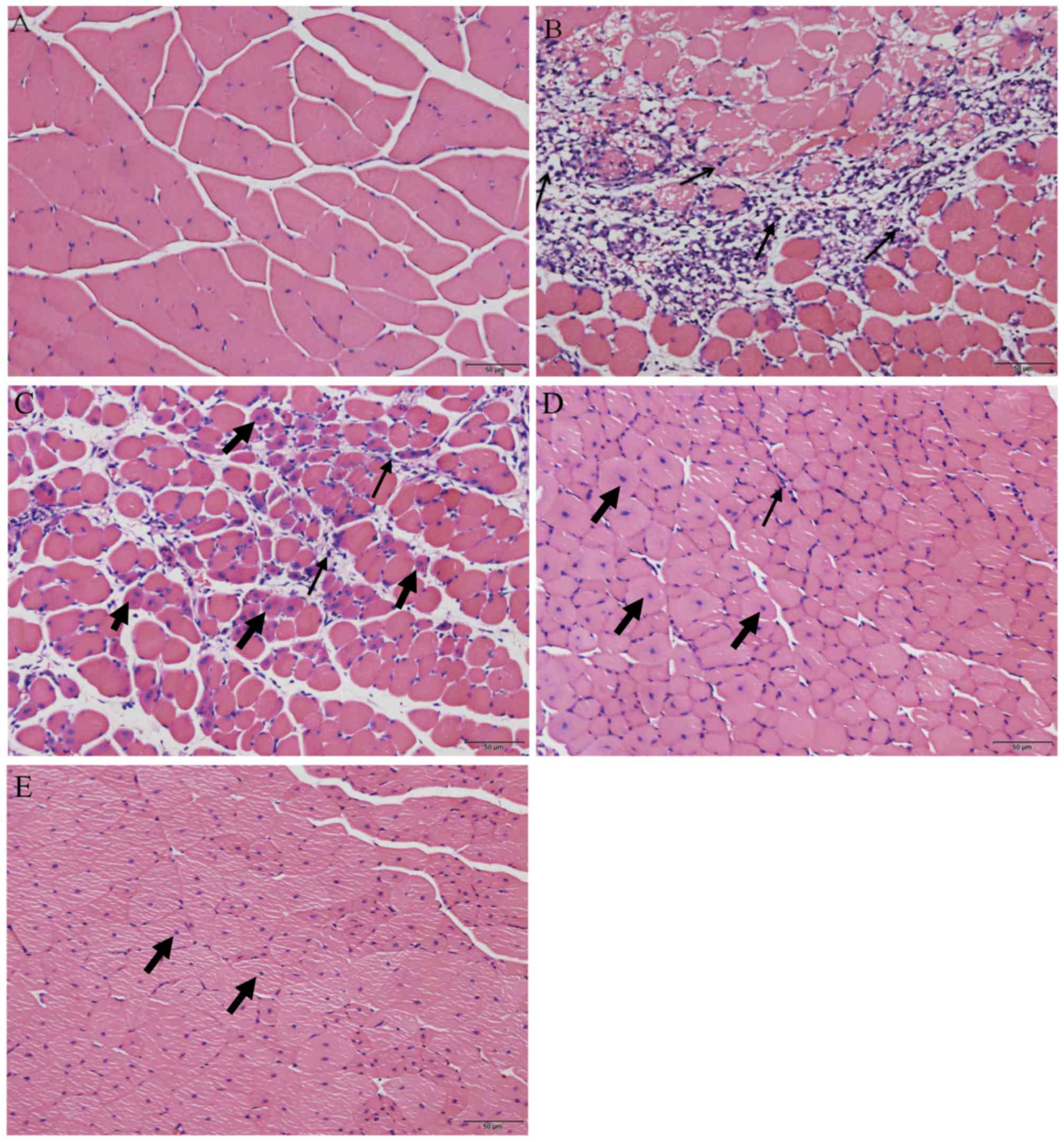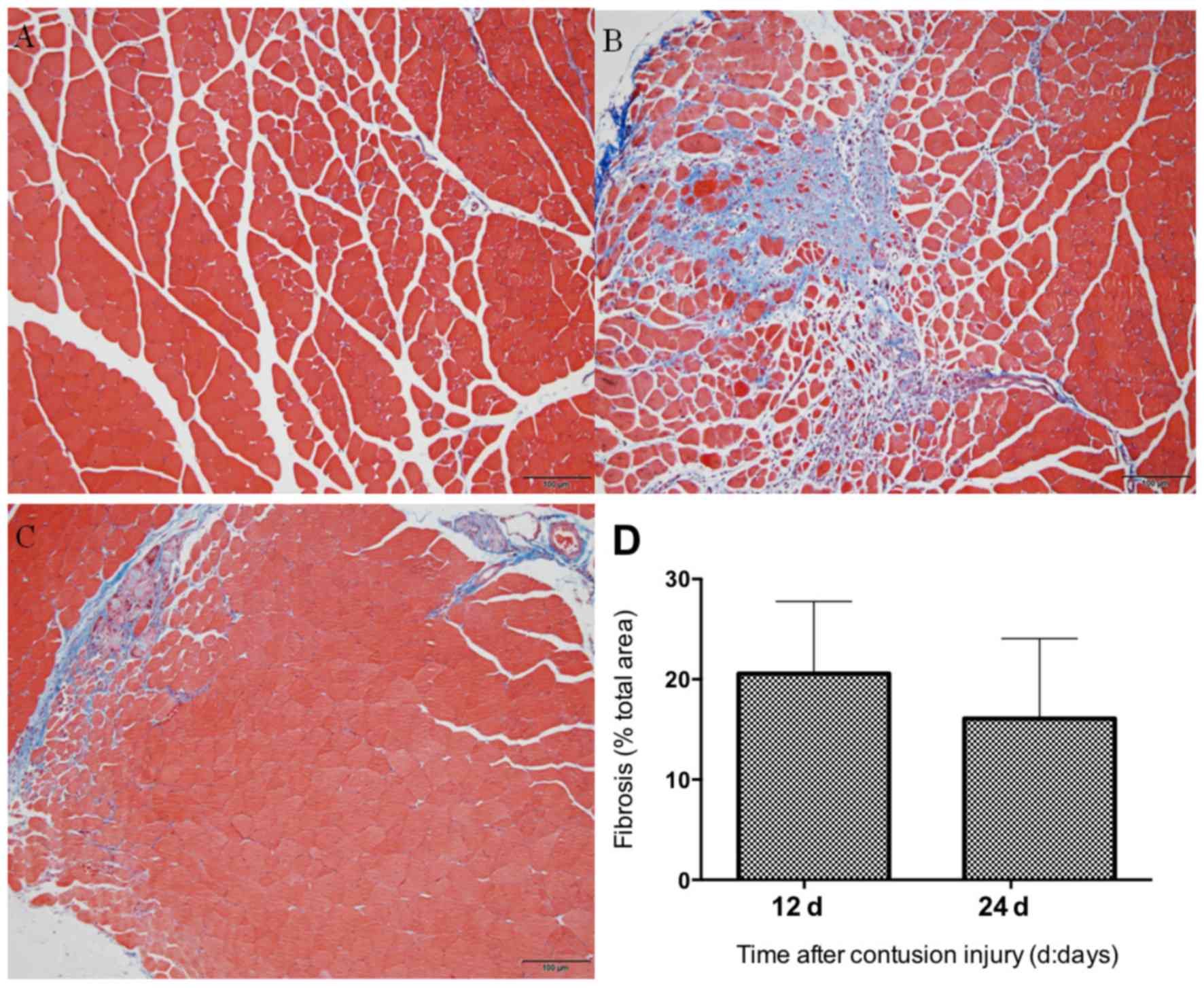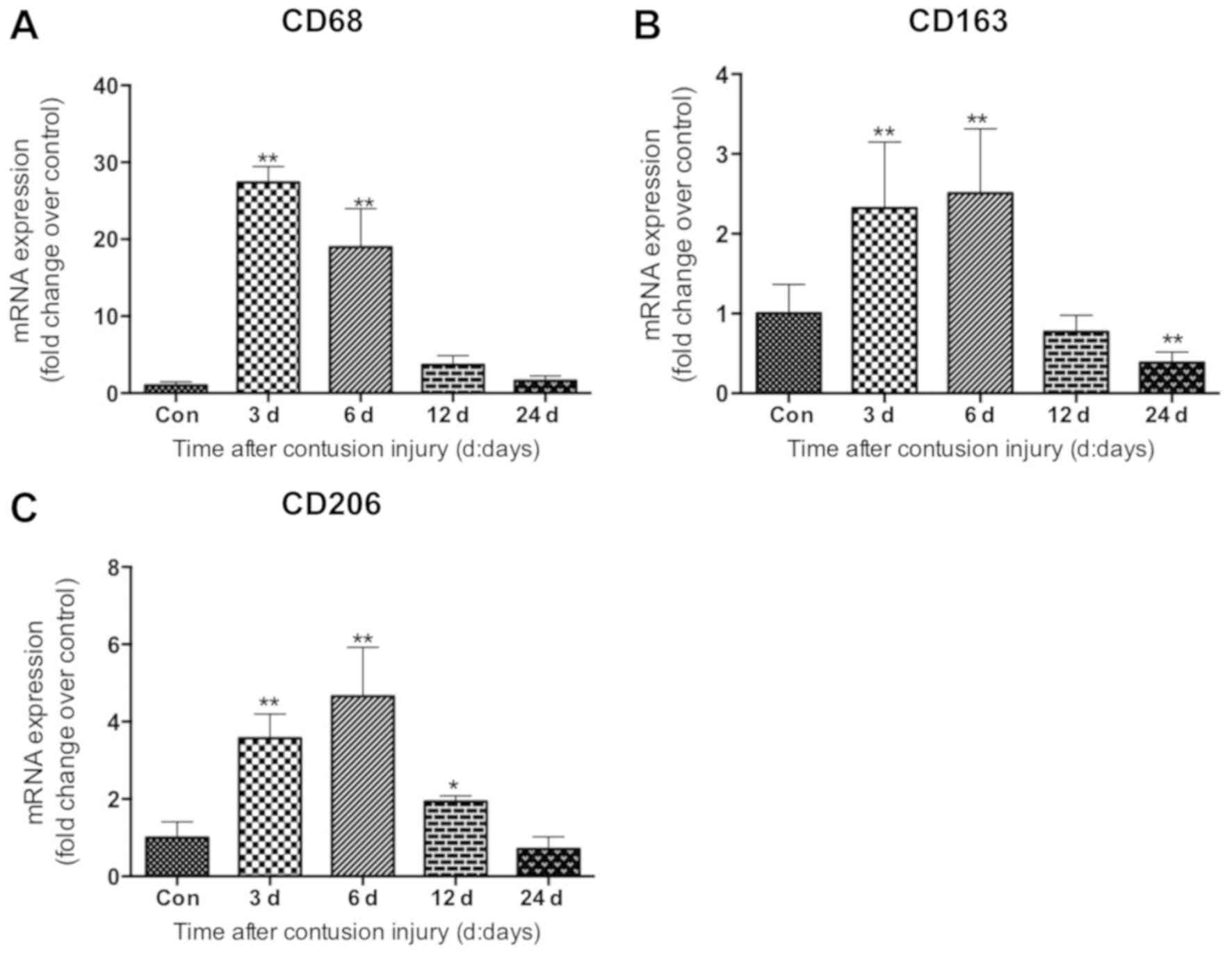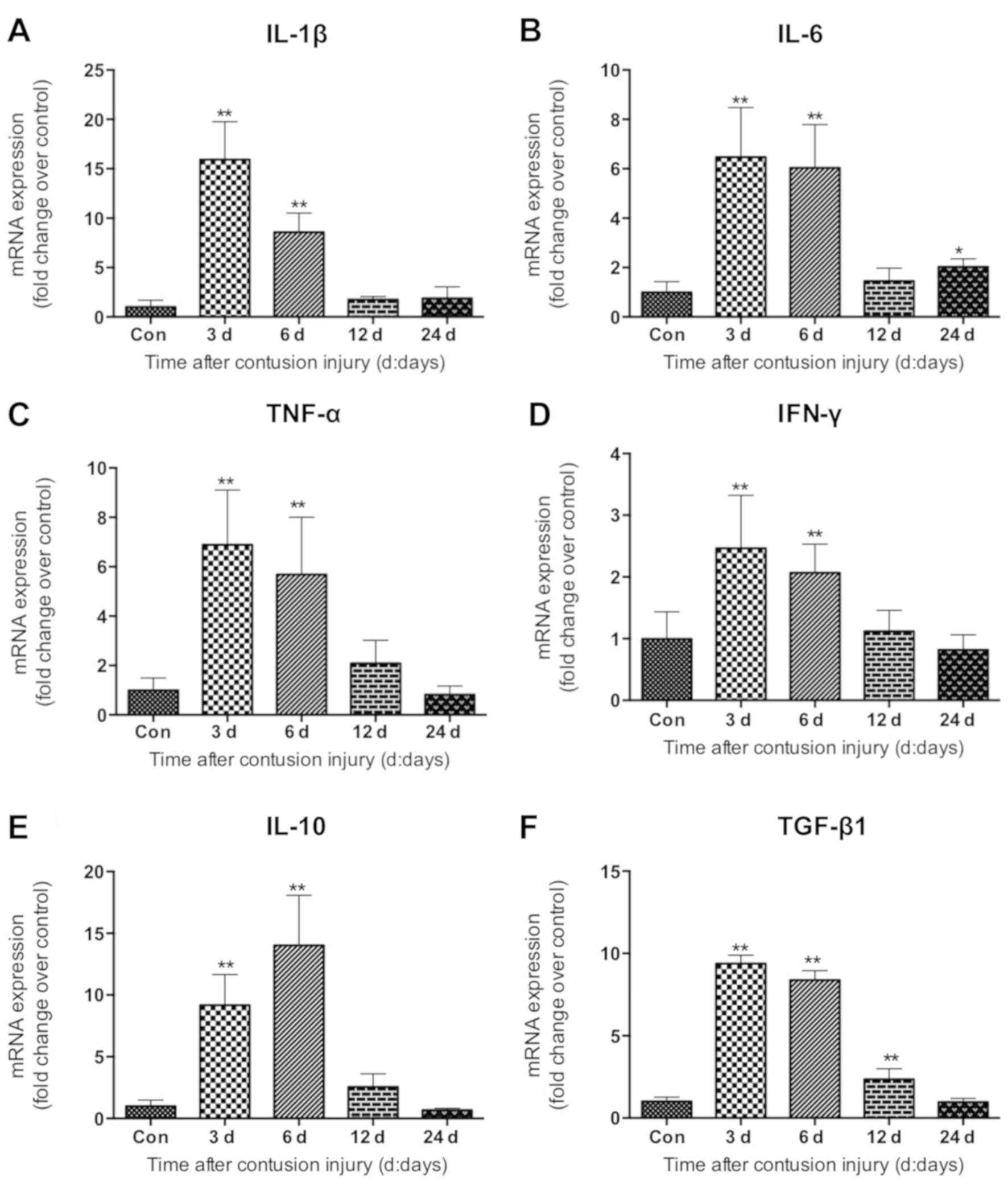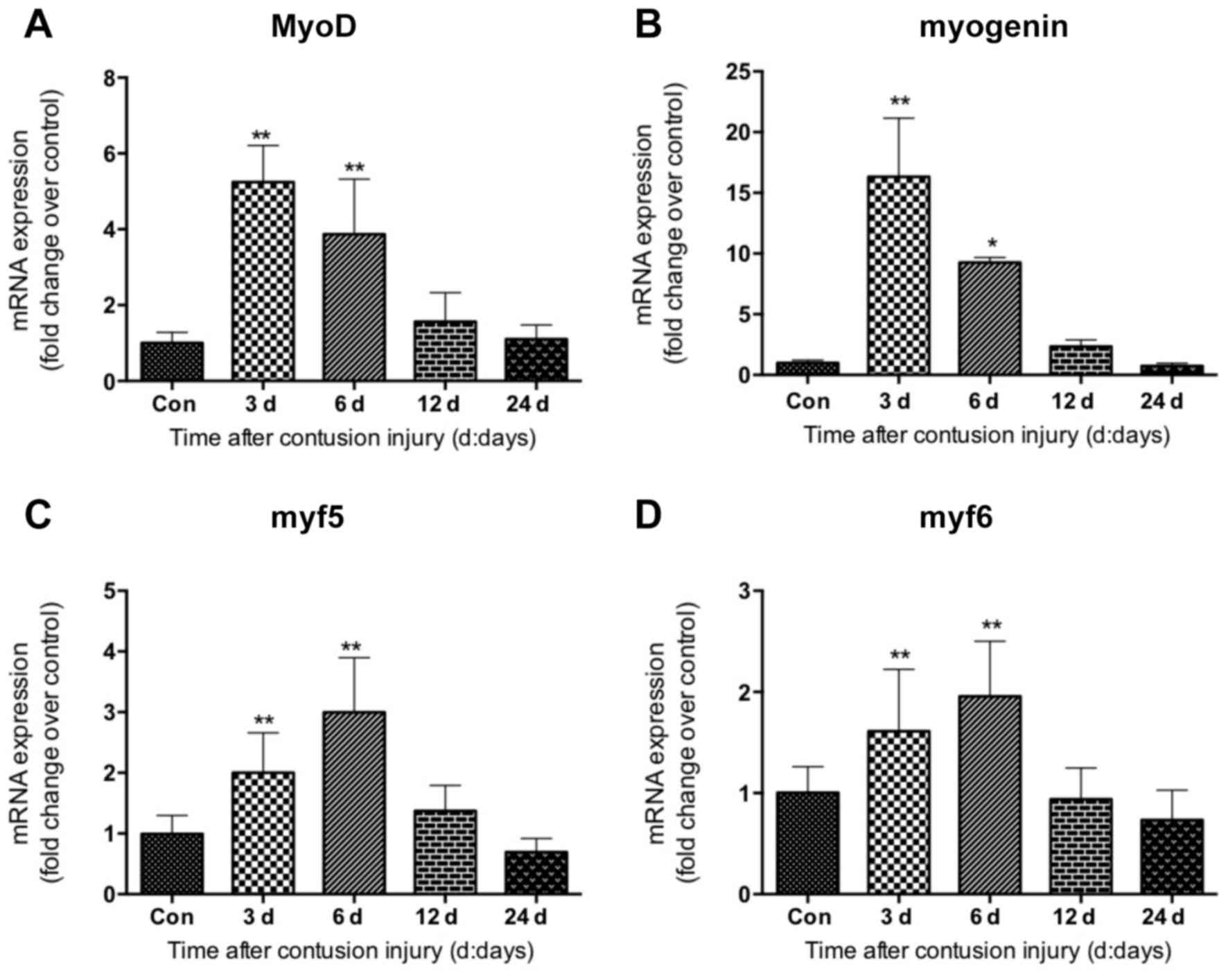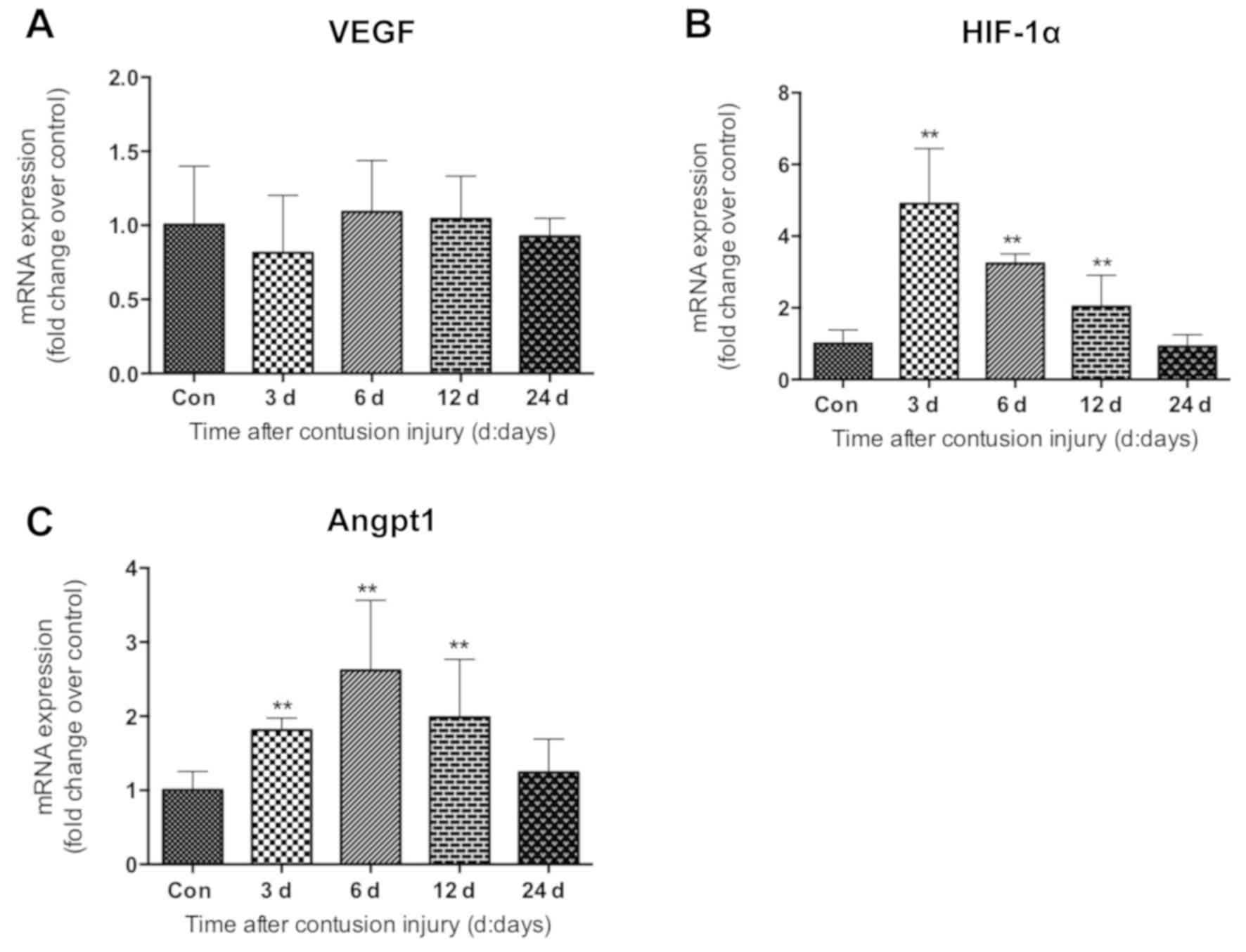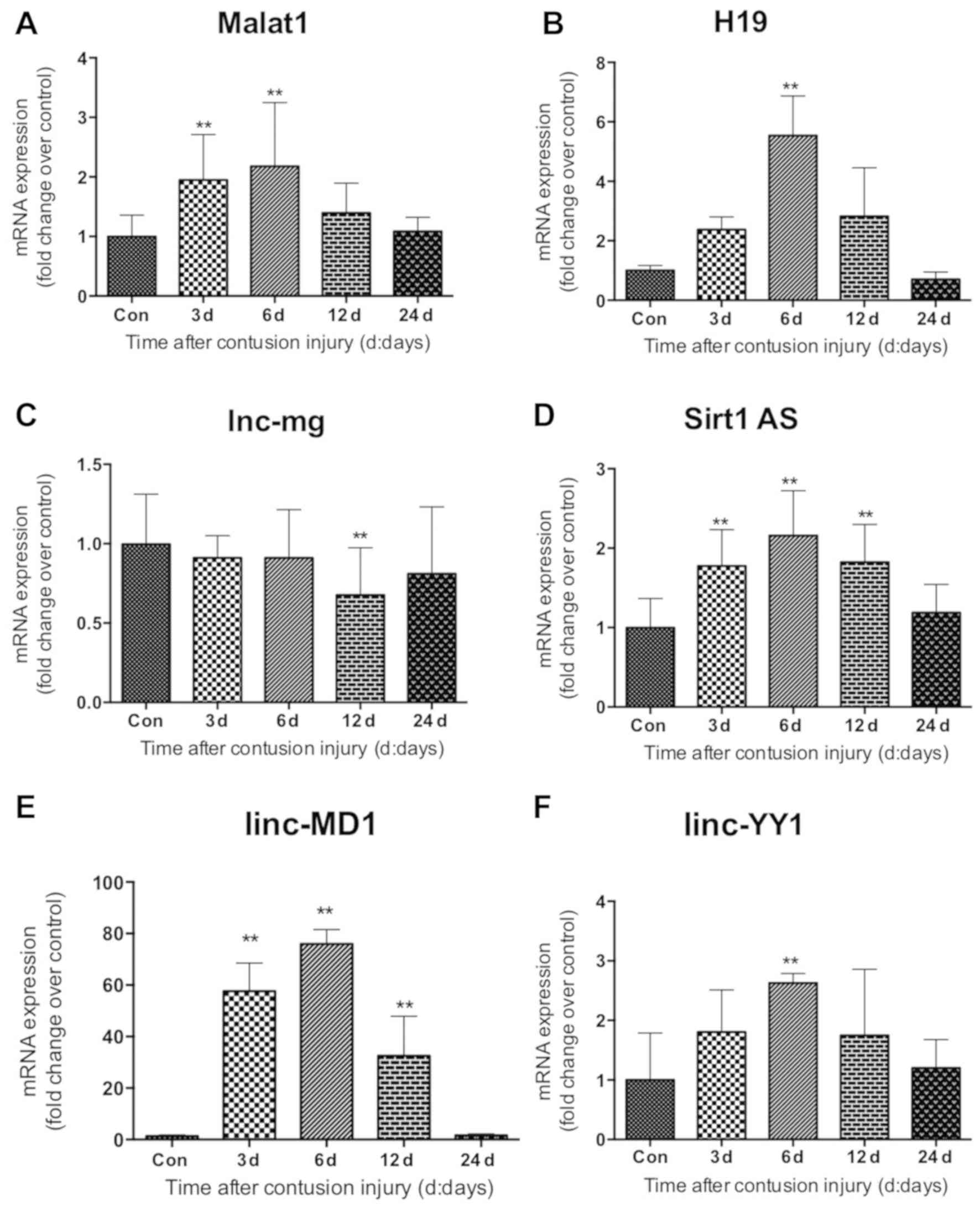|
1
|
Lu H, Huang D, Saederup N, Charo IF,
Ransohoff RM and Zhou L: Macrophages recruited via CCR2 produce
insulin-like growth factor-1 to repair acute skeletal muscle
injury. FASEB J. 25:358–369. 2011. View Article : Google Scholar : PubMed/NCBI
|
|
2
|
Carlson BM and Faulkner JA: The
regeneration of skeletal muscle fibers following injury: A review.
Medicine Sci Sports Exerc. 15:187–198. 1983. View Article : Google Scholar
|
|
3
|
Tidball JG: Mechanisms of muscle injury,
repair and regeneration. Compr Physiol. 1:2029–2062.
2011.PubMed/NCBI
|
|
4
|
Baggiolini M: Chemokines in pathology and
medicine. J Intern Med. 250:91–104. 2001. View Article : Google Scholar : PubMed/NCBI
|
|
5
|
Xiao W, Liu Y and Chen P: Macrophage
depletion impairs skeletal muscle regeneration: The roles of
pro-fibrotic factors, inflammation and oxidative stress.
Inflammation. 39:2016–2028. 2016. View Article : Google Scholar : PubMed/NCBI
|
|
6
|
Angelini G, Salinari S, Bertuzzi A,
Iaconelli A and Mingrone G: Metabolic surgery improves insulin
resistance through the reduction of gut-secreted heat shock
proteins. Commun Biol. 1:692018. View Article : Google Scholar : PubMed/NCBI
|
|
7
|
Zammit PS: Function of the myogenic
regulatory factors Myf5, MyoD, Myogenin and MRF4 in skeletal
muscle, satellite cells and regenerative myogenesis. Semin Cell Dev
Biol. 72:19–32. 2017. View Article : Google Scholar : PubMed/NCBI
|
|
8
|
Kassar-Duchossoy L, Gayraud-Morel B, Gomès
D, Rocancourt D, Buckingham M, Shinin V and Tajbakhsh S: Mrf4
determines skeletal muscle identity in Myf5: Myod double-mutant
mice. Nature. 431:466–471. 2004. View Article : Google Scholar : PubMed/NCBI
|
|
9
|
Zanou N and Gailly P: Skeletal muscle
hypertrophy and regeneration: Interplay between the myogenic
regulatory factors (MRFs) and insulin-like growth factors (IGFs)
pathways. Cell Mol Life Sci. 70:4117–4130. 2013. View Article : Google Scholar : PubMed/NCBI
|
|
10
|
van Heesch S, van Iterson M, Jacobi J,
Boymans S, Essers PB, de Bruijn E, Hao W, MacInnes AW, Cuppen E and
Simonis M: Extensive localization of long noncoding RNAs to the
cytosol and mono- and polyribosomal complexes. Genome Biol.
15:R62014. View Article : Google Scholar : PubMed/NCBI
|
|
11
|
Batista PJ and Chang HY: Long noncoding
RNAs: Cellular address codes in development and disease. Cell.
152:1298–1307. 2013. View Article : Google Scholar : PubMed/NCBI
|
|
12
|
Wang J, Shao N, Ding X, Tan B, Song Q,
Wang N, Jia Y, Ling H and Cheng Y: Crosstalk between transforming
growth factor-beta signaling pathway and long non-coding RNAs in
cancer. Cancer Lett. 370:296–301. 2016. View Article : Google Scholar : PubMed/NCBI
|
|
13
|
Xu X, Ji S, Li W, Yi B, Li H, Zhang H and
Ma W: LncRNA H19 promotes the differentiation of bovine skeletal
muscle satellite cells by suppressing Sirt1/FoxO1. Cell Mol Biol
Lett. 22:102017. View Article : Google Scholar : PubMed/NCBI
|
|
14
|
Dey BK, Pfeifer K and Dutta A: The H19
long noncoding RNA gives rise to microRNAs miR-675-3p and
miR-675-5p to promote skeletal muscle differentiation and
regeneration. Genes Dev. 28:491–501. 2014. View Article : Google Scholar : PubMed/NCBI
|
|
15
|
Wang GQ, Wang Y, Xiong Y, Chen XC, Ma ML,
Cai R, Gao Y, Sun YM, Yang GS and Pang WJ: Sirt1 AS lncRNA
interacts with its mRNA to inhibit muscle formation by attenuating
function of miR-34a. Sci Rep. 6:218652016. View Article : Google Scholar : PubMed/NCBI
|
|
16
|
Chen X, He L, Zhao Y, Li Y, Zhang S, Sun
K, So K, Chen F, Zhou L, Lu L, et al: Malat1 regulates myogenic
differentiation and muscle regeneration through modulating MyoD
transcriptional activity. Cell Discov. 3:170022017. View Article : Google Scholar : PubMed/NCBI
|
|
17
|
Sun Y, Sun X, Liu S, Liu L and Chen J: The
overlap between regeneration and fibrosis in injured skeletal
muscle is regulated by phosphatidylinositol 3-kinase/Akt signaling
pathway-A bioinformatic analysis based on lncRNA microarray. Gene.
672:79–87. 2018. View Article : Google Scholar : PubMed/NCBI
|
|
18
|
Diaz JA, Fischer DA, Rettig AC, Davis TJ
and Shelbourne KD: Severe quadriceps muscle contusions in athletes.
A report of three cases. Am J Sports Med. 31:289–293. 2003.
View Article : Google Scholar : PubMed/NCBI
|
|
19
|
Livak KJ and Schmittgen TD: Analysis of
relative gene expression data using real-time quantitative PCR and
the 2(-Delta Delta C(T)) method. Methods. 25:402–408. 2001.
View Article : Google Scholar : PubMed/NCBI
|
|
20
|
Ota S, Uehara K, Nozaki M, Kobayashi T,
Terada S, Tobita K, Fu FH and Huard J: Intramuscular
transplantation of muscle-derived stem cells accelerates skeletal
muscle healing after contusion injury via enhancement of
angiogenesis. Am J Sports Med. 39:1912–1922. 2011. View Article : Google Scholar : PubMed/NCBI
|
|
21
|
Manferdini C, Paolella F, Gabusi E,
Gambari L, Piacentini A, Filardo G, Fleury-Cappellesso S, Barbero
A, Murphy M and Lisignoli G: Adipose stromal cells mediated
switching of the pro-inflammatory profile of M1-like macrophages is
facilitated by PGE2: In vitro evaluation. Osteoarthritis Cartilage.
25:1161–1171. 2017. View Article : Google Scholar : PubMed/NCBI
|
|
22
|
Tidball JG and Villalta SA: Regulatory
interactions between muscle and the immune system during muscle
regeneration. Am J Physiol Regul Integr Comp Physiol.
298:R1173–R1187. 2010. View Article : Google Scholar : PubMed/NCBI
|
|
23
|
Tonkin J, Temmerman L, Sampson RD,
Gallego-Colon E, Barberi L, Bilbao D, Schneider MD, Musarò A and
Rosenthal N: Monocyte/macrophage-derived IGF-1 orchestrates murine
skeletal muscle regeneration and modulates autocrine polarization.
Mol Ther. 23:1189–1200. 2015. View Article : Google Scholar : PubMed/NCBI
|
|
24
|
Wynn TA and Ramalingam TR: Mechanisms of
fibrosis: Therapeutic translation for fibrotic disease. Nat Med.
18:1028–1040. 2012. View
Article : Google Scholar : PubMed/NCBI
|
|
25
|
Shen W, Li Y, Zhu J, Schwendener R and
Huard J: Interaction between macrophages, TGF-beta1 and the COX-2
pathway during the inflammatory phase of skeletal muscle healing
after injury. J Cell Physiol. 214:405–412. 2008. View Article : Google Scholar : PubMed/NCBI
|
|
26
|
Ghaly A and Marsh DR:
Ischaemia-reperfusion modulates inflammation and fibrosis of
skeletal muscle after contusion injury. Int J Exp Pathol.
91:244–255. 2010. View Article : Google Scholar : PubMed/NCBI
|
|
27
|
Li Y, Cummins J and Huard J: Muscle injury
and repair. Curr Opin Orthop. 12:409–415. 2001. View Article : Google Scholar
|
|
28
|
Watts R, Johnsen VL, Shearer J and Hittel
DS: Myostatin-induced inhibition of the long noncoding RNA Malat1
is associated with decreased myogenesis. Am J Physiol Cell Physiol.
304:C995–C1001. 2013. View Article : Google Scholar : PubMed/NCBI
|
|
29
|
Han X, Yang F, Cao H and Liang Z: Malat1
regulates serum response factor through miR-133 as a competing
endogenous RNA in myogenesis. FASEB J. 29:3054–3064. 2015.
View Article : Google Scholar : PubMed/NCBI
|
|
30
|
Zhu M, Liu J, Xiao J, Yang L, Cai M, Shen
H, Chen X, Ma Y, Hu S, Wang Z, et al: Lnc-mg is a long non-coding
RNA that promotes myogenesis. Nat Commun. 8:147182017. View Article : Google Scholar : PubMed/NCBI
|
|
31
|
Cesana M, Cacchiarelli D, Legnini I,
Santini T, Sthandier O, Chinappi M, Tramontano A and Bozzoni I: A
long noncoding RNA controls muscle differentiation by functioning
as a competing endogenous RNA. Cell. 147:358–369. 2011. View Article : Google Scholar : PubMed/NCBI
|
|
32
|
Zhou L, Sun K, Zhao Y, Zhang S, Wang X, Li
Y, Lu L, Chen X, Chen F, Bao X, et al: Linc-YY1 promotes myogenic
differentiation and muscle regeneration through an interaction with
the transcription factor YY1. Nat Commun. 6:100262015. View Article : Google Scholar : PubMed/NCBI
|
|
33
|
Petersson SJ, Jørgensen LH, Andersen DC,
Nørgaard RC, Jensen CH and Schrøder HD: SPARC is up-regulated
during skeletal muscle regeneration and inhibits myoblast
differentiation. Histol Histopathol. 28:1451–1460. 2013.PubMed/NCBI
|
|
34
|
Huang JK, Ma L, Song WH, Lu BY, Huang YB,
Dong HM, Ma XK, Zhu ZZ and Zhou R: LncRNA-MALAT1 promotes
angiogenesis of thyroid cancer by modulating tumor-associated
macrophage FGF2 protein secretion. J Cell Biochem. 118:4821–4830.
2017. View Article : Google Scholar : PubMed/NCBI
|
|
35
|
Marques-Rocha JL, Samblas M, Milagro FI,
Bressan J, Martinez JA and Marti A: Noncoding RNAs, cytokines and
inflammation-related diseases. FASEB J. 29:3595–3611. 2015.
View Article : Google Scholar : PubMed/NCBI
|
|
36
|
Duru N, Wolfson B and Zhou Q: Mechanisms
of the alternative activation of macrophages and non-coding RNAs in
the development of radiation-induced lung fibrosis. World J Biol
Chem. 7:231–239. 2016. View Article : Google Scholar : PubMed/NCBI
|
|
37
|
Zhang C, Li Y, Wu Y, Wang L, Wang X and Du
J: Interleukin-6/signal transducer and activator of transcription 3
(STAT3) pathway is essential for macrophage infiltration and
myoblast proliferation during muscle regeneration. J Biol Chem.
288:1489–1499. 2013. View Article : Google Scholar : PubMed/NCBI
|
|
38
|
Zhao G, Su Z, Song D, Mao Y and Mao X: The
long noncoding RNA MALAT1 regulates the lipopolysaccharide-induced
inflammatory response through its interaction with NF-kappaB. FEBS
Lett. 590:2884–2895. 2016. View Article : Google Scholar : PubMed/NCBI
|
|
39
|
Michalik KM, You X, Manavski Y,
Doddaballapur A, Zörnig M, Braun T, John D, Ponomareva Y, Chen W,
Uchida S, et al: Long noncoding RNA MALAT1 regulates endothelial
cell function and vessel growth. Circ Res. 114:1389–1397. 2014.
View Article : Google Scholar : PubMed/NCBI
|
|
40
|
Piccoli MT, Gupta SK, Viereck J,
Foinquinos A, Samolovac S, Kramer FL, Garg A, Remke J, Zimmer K,
Batkai S and Thum T: Inhibition of the cardiac fibroblast-enriched
lncRNA Meg3 prevents cardiac fibrosis and diastolic dysfunction.
Circ Res. 121:575–583. 2017. View Article : Google Scholar : PubMed/NCBI
|















